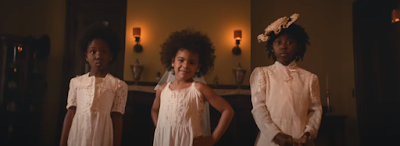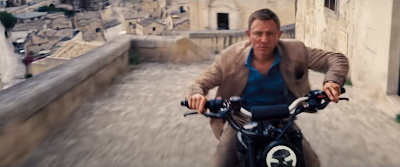Compared with the past, David Gauntlett argues that in the media today ‘we no longer get singular, straightforward messages about ideal types of male and female identities.’ Evaluate the validity of this claim with reference to the set episode of Humans and Les Revenants
Identity refers not only to the ways in which audiences can identify with representations in media products, but also the way in which said identities are encoded by the media producer. As Gauntlet states, these once stereotypical identities have shifted over time, and have been replaced with far more complicated, and often atypical representations of men and women, in order to appeal specifically to a range of niche audiences. In order to explore this idea, I shall be referring to Humans, a Channel 4 sci-fi/drama first broadcast in 2015 and a remake of the Swedish Real Humans, and the French horror/drama hybrid Les Revenants, first broadcast in France on Canal+ and created by Fabrice Gobert.
Perhaps the most complicated representation of female identity in Humans is the character of Anita. A cyborg or ‘synth’, kidnapped by thieves and reprogrammed, Anita is renamed by the stereotypically British Hawkins family and put to work as a maid. Anita fulfils her role as a stereotypical woman perfectly. The mise-en-scene of her costume emphasises her stereotypical hegemonic status as a maid. This is further anchored through her performance. Her clear-cut British accent and warm yet robotic delivery allows her to control the behaviour of the youngest daughter. In one excellent scene, Anita prepares a ‘perfect breakfast’. The mise-en-scene of the food at the breakfast table, framed in a montage of mid shots and close ups reinforces Anita’s hegemonic status as a perfect mother, cleaner and maid. Her presence in the house forms a binary opposition with Laura, a flustered, hard-working lawyer, who presents a particularly atypical representation of Anita. Laura demonstrates a distrust of Anita for disrupting her family life. In a conversation between the two women, lit by low-key lighting in a stereotypical middle class setting, Laura expresses frustration at having to deal with Anita, and calls her a “stupid machine".
However, Anita is actually Mia, a ‘conscious synth’ capable of love and other emotions. By having her memory wiped and forced in to being a ‘perfect woman’, Anita is an excellent example of a hyperreal representation, where the fake is more appealing than the actual thing that it is representing. By positioning audiences in the uncomfortable situation of the Hawkins family, the audience are forced to confront how unpleasant the stereotypical representation of women as an object used to cook, clean and have sex with really is. In this sense, Anita can be seen to be a complicated and atypical representation of women, and an allegory for how women are treated in society.
On the subject of sexualisation, Anita’s looks are instantly used as a ‘selling point’ when the Hawkins family purchase her. The youngest daughter delightedly announces “I hope she’s pretty!”, emphasising the role that hegemonic attractiveness plays in a patriarchal society that makes huge expectations of the way that women look. However, Anita is nowhere near as sexualised as Niska, another synth sold in to Slavery. Unlike Anita, Nisha has retained her memories, and experiences frustration at being captured. As Leo, her former commander enters the brothel where Niska is being held, the camera takes a voyeuristic mode of address, slowly zooming in to Niska as she herself directly addresses the camera. Through her performance, she symbolically encodes sexuality through the gesture of her pout, and by pushing her breasts together in a stereotypically sexualised manner. However, as soon as Leo enters, the mask slips, and Niska resumes being a ‘normal woman’. Judith Butler argues that gender performativity and the ways in which we ‘act out’ our gender through gestures, costumes and other proairetic aspects shape and influence the world around us. Arguably, Niska’s appearance as a stereotypical and even hyperreal representation of a sex worker manipulates and influences the world around her, reinforcing hegemonic gender norms that she does not wish to live up to.
In a final, particularly unpleasant scene, Niska is sexually assaulted by a client. As he roughly initiates intercourse with her, the camera slowly zooms in to her face, emphasising the pain the she feels. Niska announces that “I was born to feel pain” earlier in the episode, reaffirming her humanity. The target the heterosexual male audience are forced to confront the particularly un-erotic shot of her pained face towards the end of the episode in a particularly uncomfortable mode of address, further emphasising the extent to which gender roles have shifted.
Les Revenants, too presents complicated and atypical representations of gender, particularly of women. However, while Humans is primarily focused on sex work and patriarchal hegemony, Les Revenants instead is based on the binary opposition between sex and death. One excellent example of this is the character of Simon. Simon, particularly harmonically attractive, lives up to stereotypical gender roles from his first appearance. When entering the ‘Lake Pub’ bar, Simon is particularly pushy, and directly confronts several people. His pushy nature is emphasised and anchored through the mise-en-scene of his craggy, grumpy face, and the symbolic code of his costume, the suit which he was buried in. Simon is a stereotypical representation of masculinity. However, Simon finds his masculinity subverted several times. After being approached and chatted up by the hegemonically attractive Lena at the pub, the audience are positioned in a stereotypically titillating preferred reading, where we take sexual gratification from two attractive characters conversing. Lena herself is atypical, and just as pushy as Simon, drunkenly announcing ‘buy me a drink and I’ll take you [to where you want to go]. Simon abandons Lena quickly for another woman, the one he is searching for. At this stage, Simon represents a particularly atypical representation of male identity, and starts to emotionally bang his fists against the door and cry and she refuses to open. Simon is a stereotypical, archetypal heartthrob. His character is perhaps included to appeal to the teenage female secondary audience of the programme. However, by demonstrating both stereotypical and atypically emotional traits, he can be seen to be an atypical representation of male identity, and far more complex that traditional representations.
Perhaps the most atypical representation of female identity is Julie, however. While previous hegemonically presented gender roles would see women in their late-20’s and early 30’s as mothers and housewives, Julie bucks the trend by being a complicated and difficult to understand character. While Julie has stereotypically French features and a slim build, she is presented, through her lack of makeup and through her lack of sexualisation as not hegemonically attractive. In a sense, she forms a binary opposition with the sexually objectified Lena. Van-Zoonen argues that gender is encoded through media language. Julies oversized jumpers and popped collars are both stereotypically masculine and resit sexualisation through not flattering her form. Her lack of discernible make-up demonstrates to the audience that she is both subversive, atypical and does not conform to female standards of hegemonic attractiveness.
In a pivotal scene, Julie is stalked by victor, the ‘creepy child’ so very conventional of the horror genre. The threat of the scene is anchored through the proairetic code of the setting, as Julie makes her way back through the intricate mise-en-scène of run-down concrete roads and imposing, concrete buildings. Audiences aware of the horror genre and its conventions will be expecting a jump scare or something else appropriate.
However, Julie completely rejects these stereotypical associations. As she looks out of the window of her flat, the audience positioned with her and through a high angled extreme long shot of her stalker, Julie does not scream, but instead simply intone “what’s he doing out so late?”. This atypical representation of femininity is important for audiences watching this show. As a non-sexualised, powerful and capable young woman, Julie gives young female audiences a character to relate to and look up to. Her complicated and nuanced representation also confirms that Les revenants is a niche show, aimed at a cult audience. A more commercially viable show would have sexualised Julie in order to appeal to a heterosexual male audience, as Van-Zoonen argues, the sole function of women in a media product is to be the focus of a heterosexual male gaze.
Yet not every representation is quite as atypical and subversive. The character of Joe, the father, presents a stereotypical and old-fashioned representation of male identity. For example, in a telling scene when Laura returns from a business trip, she is greeted with a montage of the mise-en-scène of messy shoes and an untidy house. That Joe cannot keep order and tidiness reinforces that there is a binary opposition between men and women, and his performativity of gender actually necessitates employing a hyperreal woman, Anita, in order to help him sort his life out. While he is not a main character by any stretch of the imagination, he is one of several straightforward representations of male identity in Humans, which only emphasises how much more challenging the representations of female identity are in this show.
In conclusion, I have explored how both Humans and Les Revenants present subversive and atypical representations of the typical and ‘ideal’ male and female identities that audiences are familiar with. Gauntlets’ assertion is clearly applicable here, though it is worth noting that both Humans and Les Revenants are atypical, cult shows appealing to a smaller and more enthusiastic audience. While Van Zoonen argued that the female body is used to position and to pleasure heterosexual male audiences, we also see examples of sexualisation here, most notably the characters of Niska and Lena in Humans and Les Revenants respectively. However, both shows present complicated and profound messages about the ideal types of female representations and identities in particular, and both shows present a challenging and highly allegorical experience for their cult target audiences.









